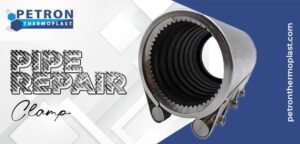Introduction
Union ball valve are essential components in many plumbing and industrial applications. These versatile valves provide precise control over fluid flow and are known for their durability and ease of maintenance. If you’re considering installing a true union ball valve, this step-by-step guide will walk you through the process. Whether you’re a seasoned professional or a DIY enthusiast, this guide will help you ensure a proper installation.
Understanding True Union Ball Valves:
Begin by explaining what a true union ball valve is, its components, the types available, and its applications. Highlight the advantages of using these valves, such as easy maintenance and the ability to isolate sections of a pipeline.
1. Safety Precautions
Emphasize the importance of safety when working with plumbing systems. Mention necessary safety gear and how to prepare your workspace for the installation.
2. Tools and Materials
Provide a comprehensive list of tools and materials required for the installation. This can include pipe cutters, wrenches, pipe tape, and the true union ball valve itself.
3. Shutting Off the Water Supply
Explain how to locate the main shutoff valve and properly drain any existing water in the pipes to prevent spills during installation.
4. Valve Selection
Guide the reader through the process of choosing the right valve size and material based on their specific needs and the type of fluid they will be controlling.
5. Valve Installation
This section should be the most detailed. Provide step-by-step instructions on how to measure and cut the pipe, assemble the valve, and secure it in place. Include relevant tips for a secure and leak-free installation.
6. Leak Testing
Describe how to perform a pressure test to check for leaks and provide guidance on identifying and fixing leaks if they occur.
7. Valve Operation and Maintenance
Offer advice on regular maintenance practices to ensure the longevity and proper functioning of the valve. Address common issues that may arise and how to troubleshoot them.
Installation guide of Union Ball Valve
Installing a union ball valve is a relatively straightforward process, but it’s important to follow the manufacturer’s guidelines and adhere to safety precautions. Below is a general guide for installing a union ball valve:
Materials and Tools You’ll Need
1. Union ball valve
2. Pipe or tubing
3. Pipe wrench or adjustable wrench
4. Teflon tape or thread sealant
5. Channel locks or pliers
6. Pipe cutter or hacksaw (if needed)
7. Safety goggles
Installation Steps
1. Prepare Your Work Area
Ensure you have adequate space to work safely and comfortably. Clear any debris or obstructions from the area.
2. Shut Off the Water Supply
If you’re installing the union ball valve in a plumbing system, turn off the water supply to the section of the pipeline where you’ll be working. This ensures no water flows while you make the connections.
3. Cut the Pipe (if necessary)
If you’re replacing an existing valve or adding a new one, you may need to cut the pipe where you want to install the valve. Use a pipe cutter or hacksaw to make a clean, square cut. Be sure to measure and mark the pipe accurately before cutting.
4. Prepare the Pipe Ends
Clean and deburr the cut pipe ends to ensure they are smooth and free from any burrs or sharp edges. This step helps create a proper seal.
5. Apply Thread Sealant or Teflon Tape
If the union ball valve has male threads, apply thread sealant or wrap Teflon tape clockwise around the threads. This helps create a watertight seal when connecting the valve.
6. Attach the Union Ball Valve
Screw the valve onto the prepared pipe end by turning it clockwise. Use a pipe wrench or adjustable wrench to tighten the valve snugly but avoid over-tightening, which could damage the threads.
7. Connect the Other End
If you’re connecting another pipe or component to the other end of the valve, repeat the process by applying thread sealant or Teflon tape and screwing it into place.
8. Check Alignment
Ensure that the valve handle is in the desired position for open or closed. The handle should be perpendicular to the pipe when closed and parallel when open.
9. Tighten the Union Nuts
On both sides of the union ball valve, there are typically union nuts or rings. Tighten these nuts by hand and then use channel locks or pliers to make them snug. Do not over-tighten, as this could damage the union.
10. Turn On the Water Supply
Gradually turn on the water supply to the system and check for leaks around the valve. If you see any leaks, shut off the water supply and re-tighten the union nuts slightly. Check again for leaks until the valve is watertight.
11. Test the Valve
Open and close the valve several times to ensure it operates smoothly and effectively. Confirm that it stops the flow of water when closed and allows water to pass when open.
12. Final Inspection
Inspect the entire installation for any signs of leaks. Once you are confident that there are no leaks and the valve is functioning correctly, you can consider the installation complete.
Properties of Union Ball Valve
Union ball valves are essential components in various industries and applications, known for their versatile properties and reliable performance. Here are the key properties of union ball valves:
1. Durable Construction
Union ball valves are typically made of robust materials such as PVC, CPVC, brass, or stainless steel. This construction ensures their longevity, even in harsh environments.
2. Corrosion Resistance
Many union ball valves are resistant to corrosion, making them suitable for use with corrosive chemicals and fluids. Stainless steel and certain plastics are particularly resistant to corrosion.
3. Leak-Free Operation
Union ball valves are designed to provide a secure, leak-free seal when fully closed. This feature is crucial for preventing fluid leakage and ensuring system integrity.
4. Precise Flow Control
These valves offer precise control over fluid flow. By rotating the ball within the valve, users can easily adjust the flow rate, making them ideal for applications that require accurate flow regulation.
5. Versatility
Union ball valves are versatile and can be used in a wide range of applications, including water supply systems, chemical processing, HVAC systems, and more. They can handle various fluids, gases, and temperatures.
6. Easy Installation and Maintenance
Union ball valves typically have a simple design, which makes them easy to install and maintain. The union ends allow for straightforward disconnection for maintenance or replacement without disturbing the entire pipeline.
7. Pressure Rating
These valves come in various pressure ratings to suit different applications. High-pressure models are available for demanding industrial environments.
8. Temperature Resistance
Union ball valves can handle a wide range of temperatures, from freezing conditions to high-temperature applications. The choice of materials may impact their specific temperature range.
9. Chemical Compatibility
Depending on the material chosen for the valve, they can be compatible with a wide range of chemicals. It’s important to select the appropriate material based on the specific chemicals in use.
10. Reliable Sealing Mechanism
Union ball valves use a ball with a hole (bore) through its center. When the valve is closed, the ball’s bore aligns with the pipe, allowing flow. When rotated 90 degrees, the bore is perpendicular to the pipe, blocking the flow. This mechanism provides reliable on/off control.
11. Resistance to Wear and Erosion
Union ball valves are designed to withstand wear and erosion, making them suitable for long-term use in demanding applications.
12. Size Range
These valves are available in various sizes to accommodate different pipe diameters, ensuring compatibility with various plumbing and industrial systems.
Conclusion
Summarize the key steps for installing a true union ball valve and remind readers of the benefits of a proper installation. union ball valves offer a combination of durability, chemical resistance, precise control, and ease of maintenance. These properties make them a popular choice for controlling fluid flow in diverse industries and applications. This comprehensive guide will empower your readers with the knowledge and confidence to install a true union ball valve effectively and safely. Whether they are professionals or DIY enthusiasts, they’ll appreciate the step-by-step instructions and insights you provide.
FAQs
Do I need special tools to install a true union ball valve?
Basic tools like a pipe wrench or adjustable wrench, Teflon tape or thread sealant, channel locks or pliers, and safety goggles are typically sufficient for installing a true union ball valve.
Can I install a true union ball valve on existing pipes?
Yes, you can install a true union ball valve on existing pipes. You’ll need to cut the pipe at the desired location if there isn’t already a valve present. Ensure that you measure and mark the pipe accurately before cutting.
Can I use a true union ball valve for gas lines?
True union ball valves are typically designed for use with water and other non-corrosive fluids. If you need a valve for gas lines, you should use a valve specifically rated for gas applications to ensure safety and compliance with regulations.
You may also like – Polycarbonate Sheet | Acrylic Plastic Sheet | Custom Plastic Injection Molding




